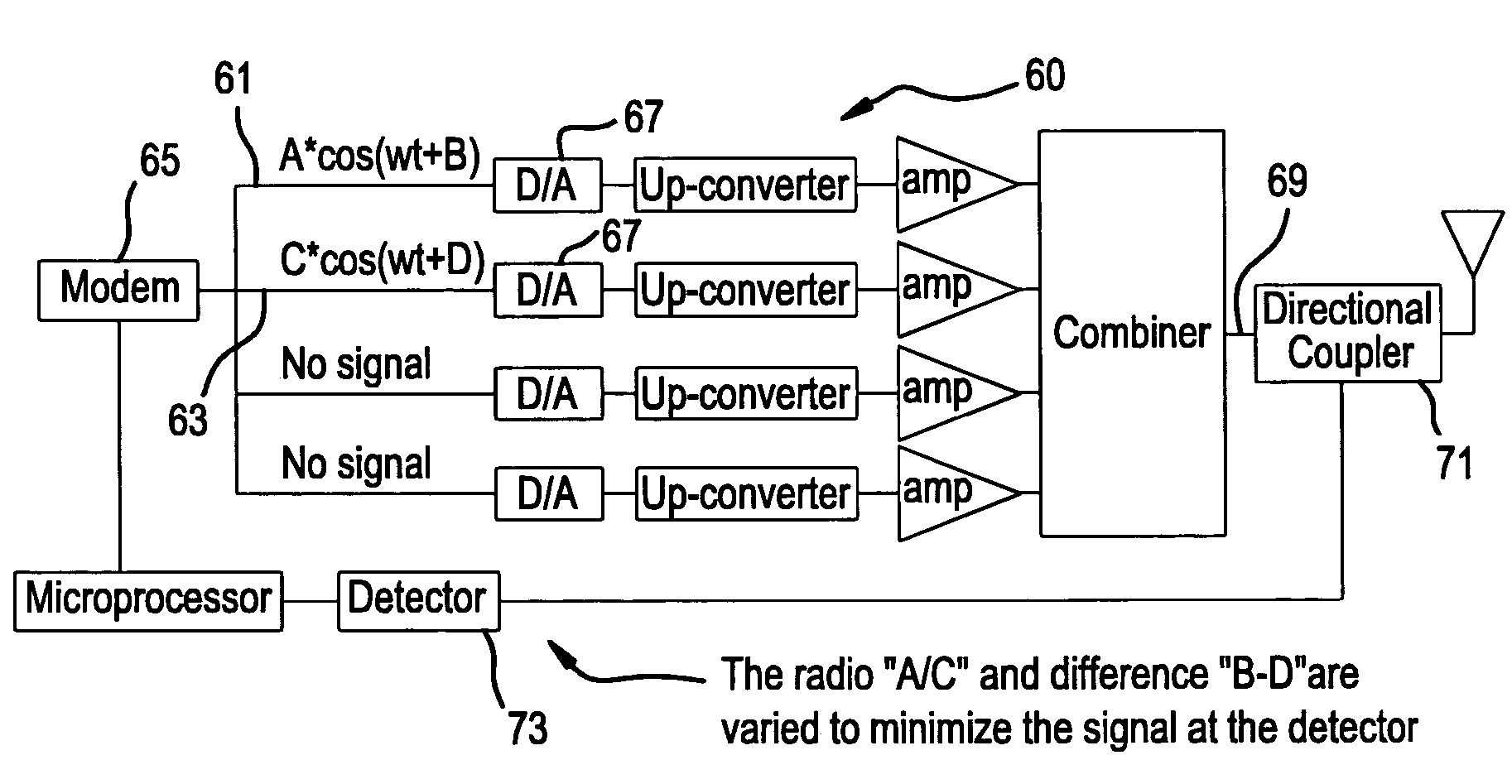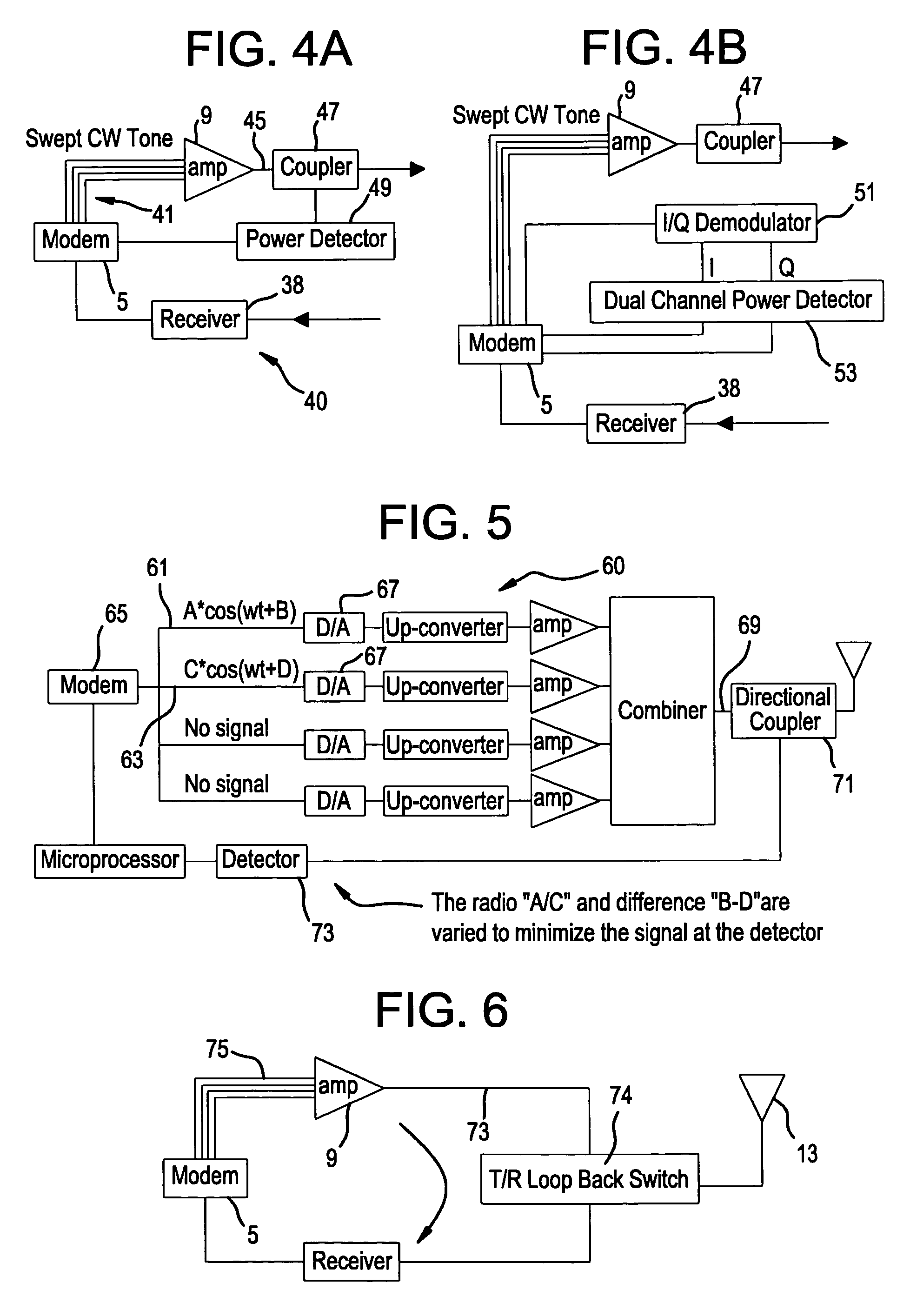Method and system for transmitting signals with reduced spurious emissions
- Summary
- Abstract
- Description
- Claims
- Application Information
AI Technical Summary
Benefits of technology
Problems solved by technology
Method used
Image
Examples
Embodiment Construction
[0050]The inventive sub-band transmitter system greatly reduces spurious emissions by amplifying narrow spectrum sub-band “slices” and then combining them to obtain the full spectrum. FIG. 1 shows an exemplary system architecture 10 that uses multiple digital to analog (D / A) converters 1 that receive different waveforms or ‘sub-bands’3A-3D that are produced by a modem 5. In this embodiment, the sub-band waveform's bandwidth is approximately one quarter the final signal bandwidth, but the bandwidth may vary depending on the number of sub-bands. The sub-band signals 3A-3D are converted to analog using the D / A converters 1, up converted at 7, amplified at 9 using four amplifiers, and then combined using combiner 11 before being sent to the antenna 13.
[0051]For comparison, FIG. 2 shows a conventional architecture with a single transmitter chain 20, using a single path that converts the signal 21 from the modem 22 to analog at 23, up-converts at 25, amplifies at 27, and then sends the si...
PUM
 Login to View More
Login to View More Abstract
Description
Claims
Application Information
 Login to View More
Login to View More - R&D
- Intellectual Property
- Life Sciences
- Materials
- Tech Scout
- Unparalleled Data Quality
- Higher Quality Content
- 60% Fewer Hallucinations
Browse by: Latest US Patents, China's latest patents, Technical Efficacy Thesaurus, Application Domain, Technology Topic, Popular Technical Reports.
© 2025 PatSnap. All rights reserved.Legal|Privacy policy|Modern Slavery Act Transparency Statement|Sitemap|About US| Contact US: help@patsnap.com



